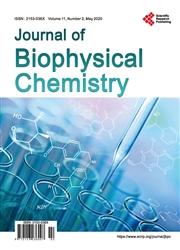Quantitative measurement of p53-p53 antibody interactions by quartz crystal microbalance: A modelsystem for immunochemical calibration
引用次数: 8
Abstract
We are developing methods to quantify antibody interactions that include a quartz crystal microbalance (QCM) system to measure, on a molecular basis, the interaction of p53 and anti-p53 antibodies. Previously, as a model system, we developed a measurement device consisting of p53 protein (human wild type), characterized by mass spectroscopy and immobilized at various concentrations on a glass slide. The device is designed as a control to be used with immunohistochemical (IHC) assays that incorporate commercially available anti-p53 antibodies and probes. In the current study, p53 protein is covalently immobilized on a silicon dioxide-coated quartz crystal and the resonance frequency shift is followed in-situ. The functionalized sensor is then incubated with the anti-p53 antibody, which provides a direct gravimetric measure of the antibody-antigen binding. This previously described method allows the comparison of the surface immobilized protein concentrations with estimates obtained by fluorescence measurement. The p53 functionalized QCM system offers an independent measure of surface immobilized protein concentration and is essential in development of our IHC calibration prototypes. These results provide a benchmark for comparing antibody systems that may be used in developing other molecular diagnostic assays such as immunocytochemical analysis and the detection of biomarker proteins in blood and urine.用石英晶体微天平定量测量p53-p53抗体相互作用:一种免疫化学校准模型系统
我们正在开发定量抗体相互作用的方法,包括石英晶体微天平(QCM)系统,以分子为基础测量p53和抗p53抗体的相互作用。在此之前,我们开发了一个由p53蛋白(人类野生型)组成的测量装置作为模型系统,通过质谱表征并固定在不同浓度的玻璃载玻片上。该设备被设计为对照,用于免疫组织化学(IHC)测定,其中包括市售的抗p53抗体和探针。本研究将p53蛋白共价固定在二氧化硅包覆的石英晶体上,原位进行共振频移。功能化的传感器然后与抗p53抗体孵育,这提供了抗体-抗原结合的直接重量测量。这种先前描述的方法可以将表面固定的蛋白质浓度与荧光测量获得的估计进行比较。p53功能化的QCM系统提供了一种独立的表面固定蛋白浓度测量方法,在IHC校准原型的开发中至关重要。这些结果为比较抗体系统提供了一个基准,可用于开发其他分子诊断分析,如免疫细胞化学分析和血液和尿液中生物标记蛋白的检测。
本文章由计算机程序翻译,如有差异,请以英文原文为准。
求助全文
约1分钟内获得全文
求助全文

 求助内容:
求助内容: 应助结果提醒方式:
应助结果提醒方式:


